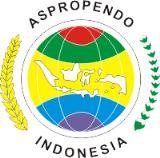PEMANFAATAN LAHAN DAN PENINGKATAN PENDAPATAN MASYARAKAT DENGAN AQUAPONIK DI JATIPULO, TANAH ABANG
Abstract
DKI Jakarta residents are considered to have poverty issues and economic inequality that will affect the health and psychological problems, the Jatipulo area, is one of them. Community training activities aim to provide skills and knowledge that are expected to be capital for the application of healthy lifestyles and improve living standards. Provisioning activities and skills into an effort in the form of 1. Training in hydroponic cultivation 2. Provision of knowledge in business 3. Provision of product marketing knowledge 4. Processing post-harvest products. The activity method was finalized in a three-month presentation and field assistance method. Based on the evaluation and monitoring carried out that the hydroponic plants applied by residents and residents independently continue to make fish ponds for aquaponics, the results of which are ready for consumption and sale. Activities related to the use of simple materials in the household as hydroponic materials and the provision of capital assistance related to food for daily consumption and assistance are consistently effective in changing people's lifestyles.
Keywords: aquaponic, entrepreneur, hydroponic, revenue
Full Text:
PDF (Bahasa Indonesia)References
Barney, J. B., & Wright, P. M. (1998). On becoming a strategic partner: the role of human resources in gaining competitive advantage. Human Resource Management, 37 (1), 31–46
Becker, G. S. (1964). Human capital. New York: Columbia University Press.
Brush, C. G., Greene, P. G., & Hart, M. M. (2001). From initial idea to unique advantage: the entrepreneurial challenge of constructing a resource base. Academy of Management Executive, 15, 64–78.
Haryanto, D. & Nurwijayanti, K. N. (2018). Imulator sistem pengairan otomatis tanaman hidroponik dengan arduino. Jurnal Teknik Elektro (TESLA), 20 (2), 131-139.
Heltberg, R. (2009). Malnutrition, poverty, and economic growth. Health Economics, 18, 77-88.
Jakarta, D. K. 2016. Profil kesehatan provinsi DKI Jakarta tahun 2016. DKI Jakarta: Dinas Kesehatan Provinsi DKI Jakarta.
Oktarina & Purwanto, B. E. (2009). Responsibilitas pertumbuhan dan hasil selada (Lactuca sativa) secara hidroponik terhadap konsentrasi dan frekuensi larutan nutrisi. Agritrop Jurnal Ilmu-ilmu Pertanian, 125-132.
Raharjo, B. (2018). Anies sebut pendapatan 3 juta warga DKI di bawah Rp 1 juta, ini kata BPS. Republika Online: https://www.republika.co.id/berita/nasional/jabodetabek-nasional/18/01/07/p26zwb415-anies-sebut-pendapatan-3-juta-warga-dki-di-bawah-rp-1-juta-ini-kata-bps Tobing, I. S. 2005. Dampak Sampah Terhadap Kesehatan Lingkungan dan Manusia. http://www.academia.edu/28857245/DAMPAK_SAMPAH_TERHADAP_KESEHATAN_LINGKUNGAN_DAN_MANUSIA
Sarri, K. K., Bakouros, I. L., & Petridou, E. (2010). Perspective on practice: entrepreneur training for creativity and innovation. Journal of European Industrial Training, 34 (3), 270-288.
Statistik, B. P. 2017. Statistik lingkungan hidup di Indonesia. The United Nations Statistics Division (UNSD): https://unstats.un.org/unsd/environment/Compendia/Statistik%20Lingkungan%20Hidup%20Indonesia%202017.pdf
Unger, J. M., Rauch, A., Frese, M., & Rosenbusch, N. (2011). Human capital and entrepreneurial success: a meta-analytical review. Journal of Business Venturing, 26, 341-358
World Bank. (2013). The double burden of malnutrition in Indonesia. Jakarta: World Bank. World Bank. 2018. The World Bank In Indonesia. Retrieved 10 22, 2018, from World Bank: https://www.worldbank.org/en/country/indonesia/overview













